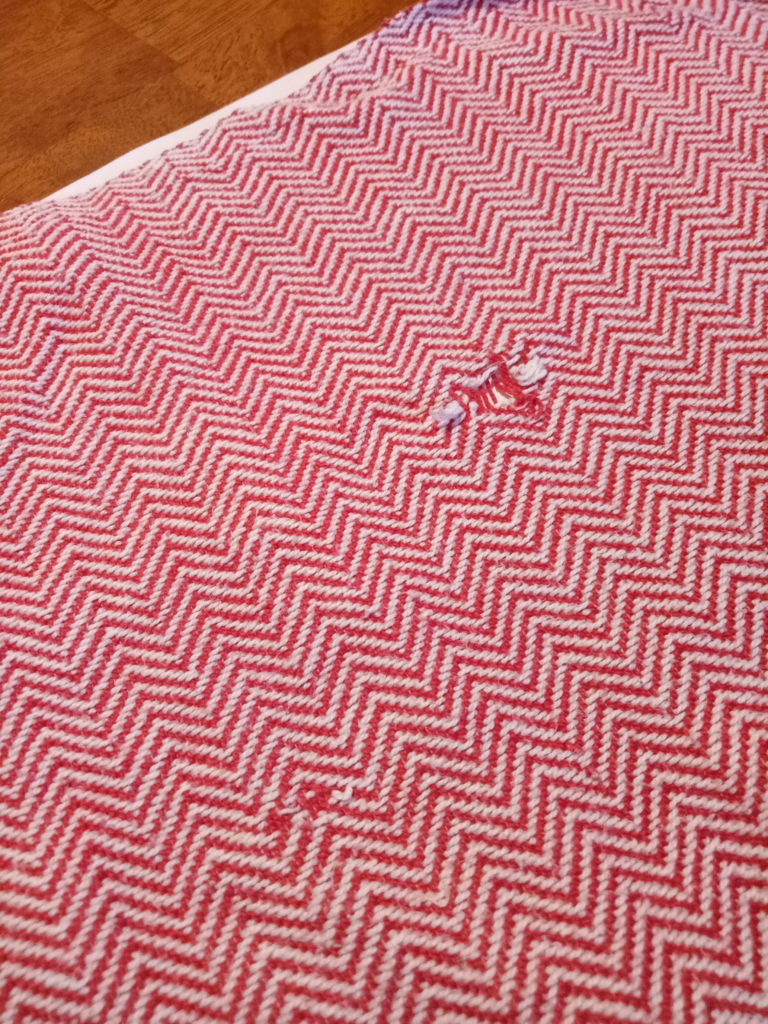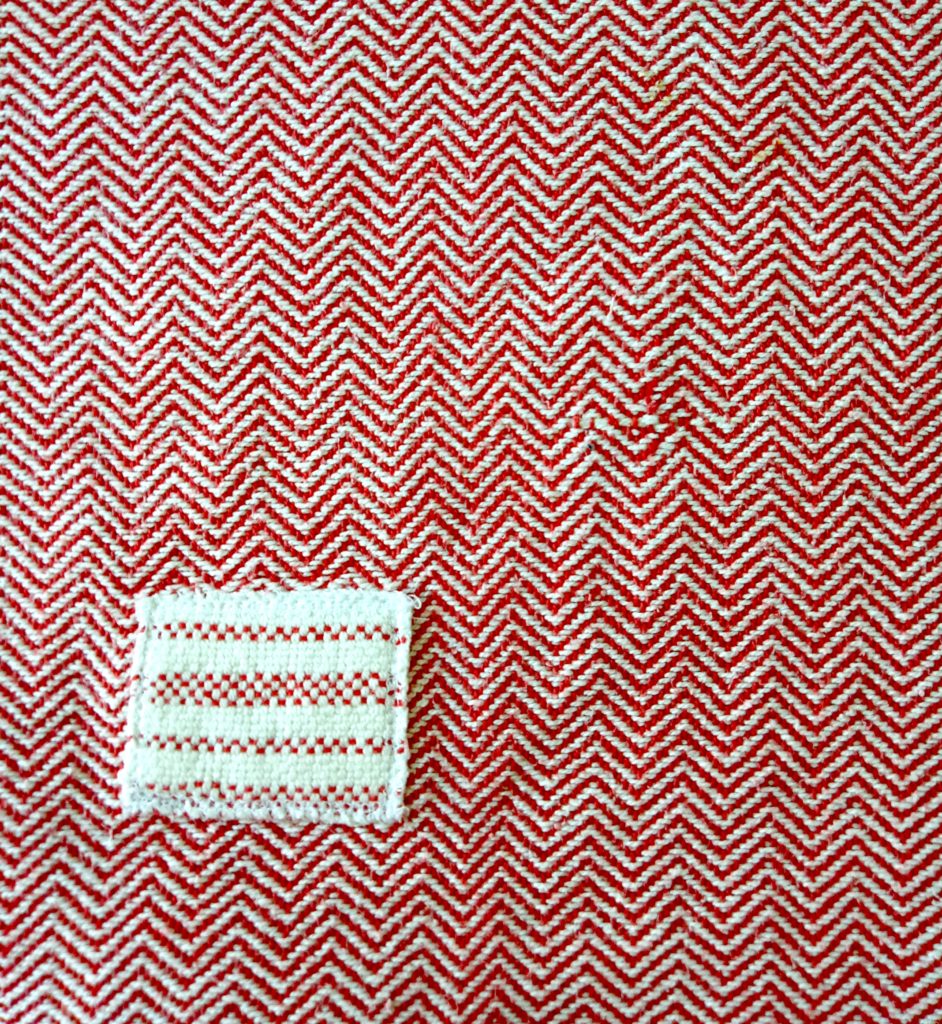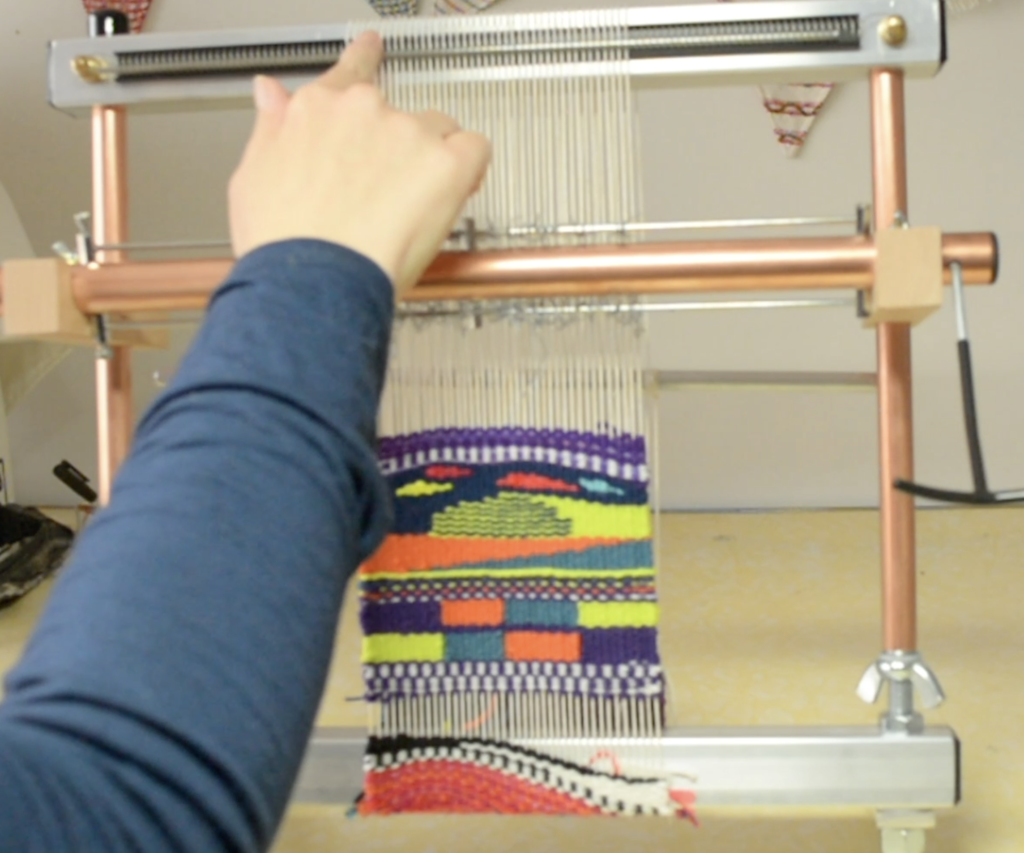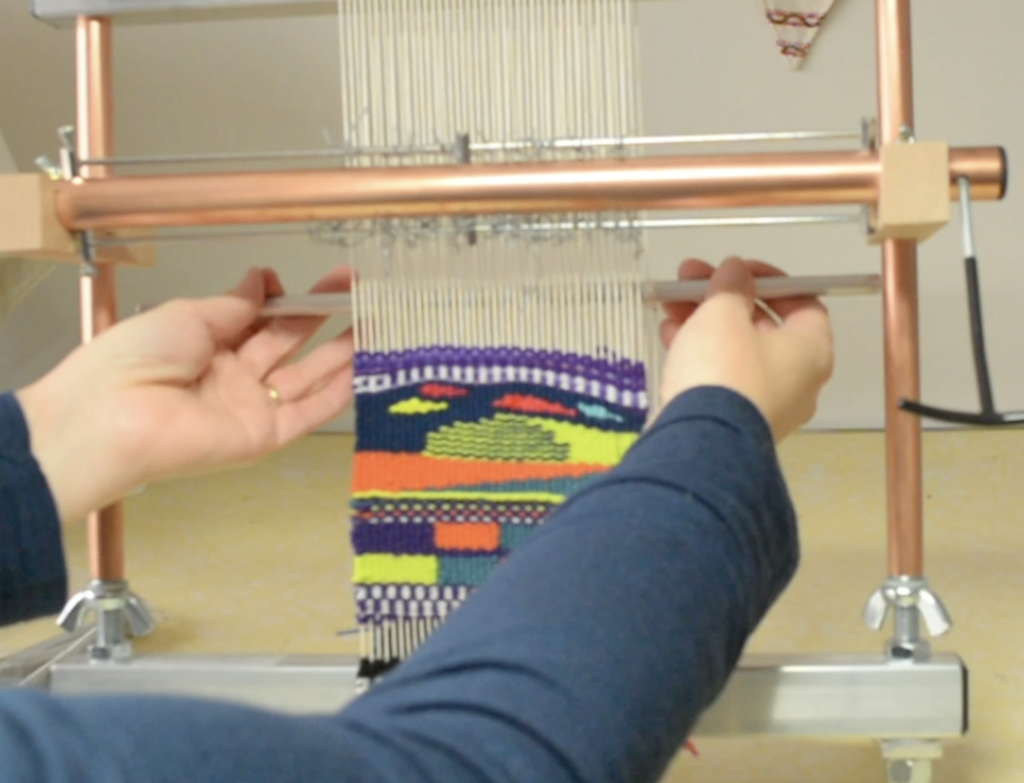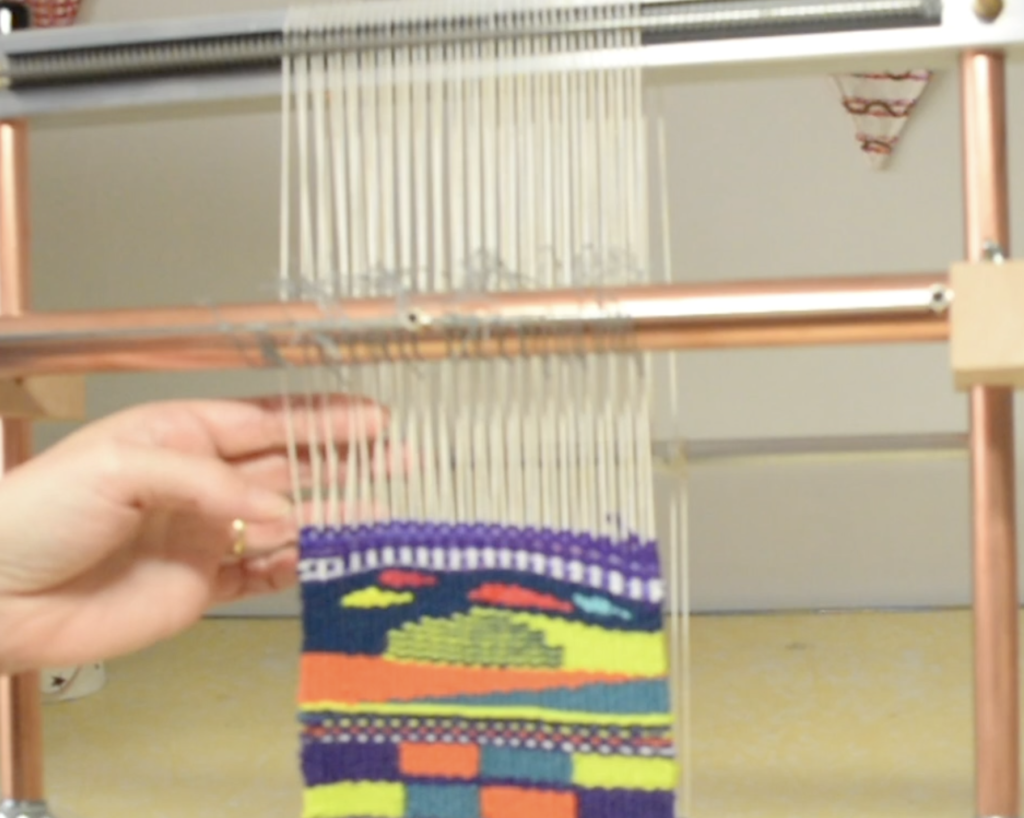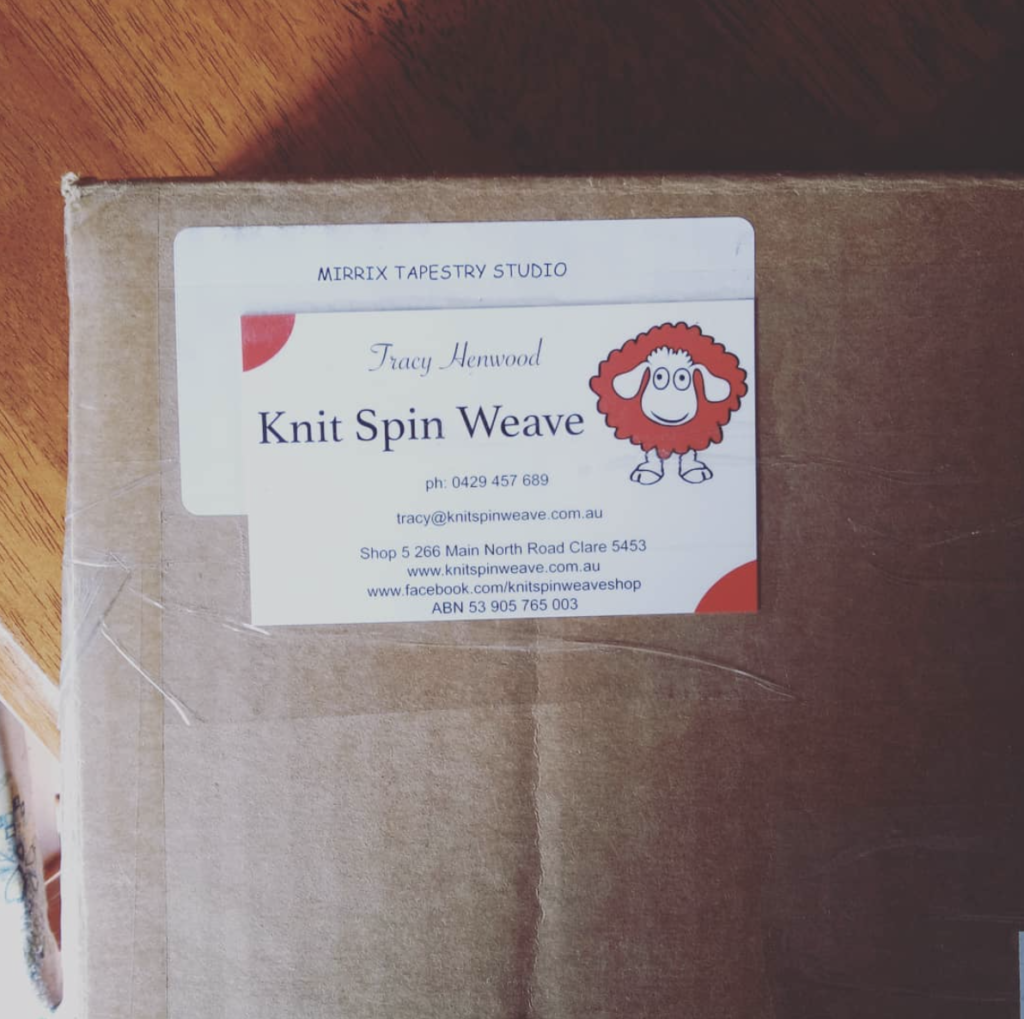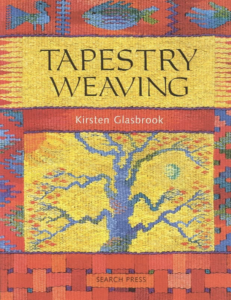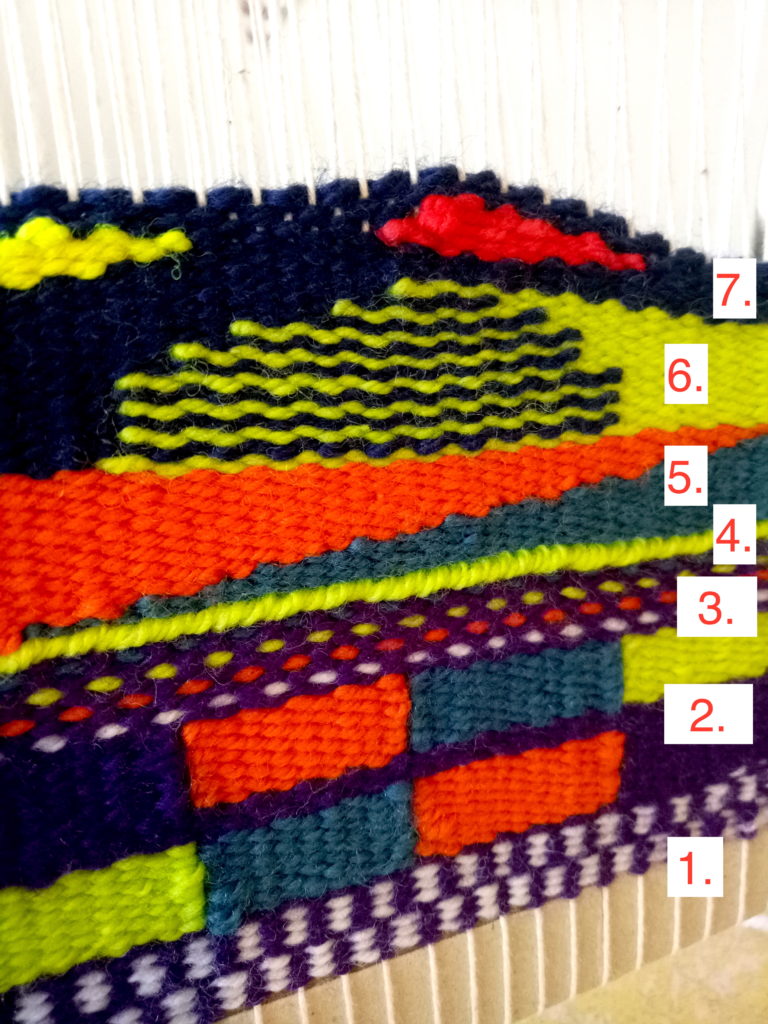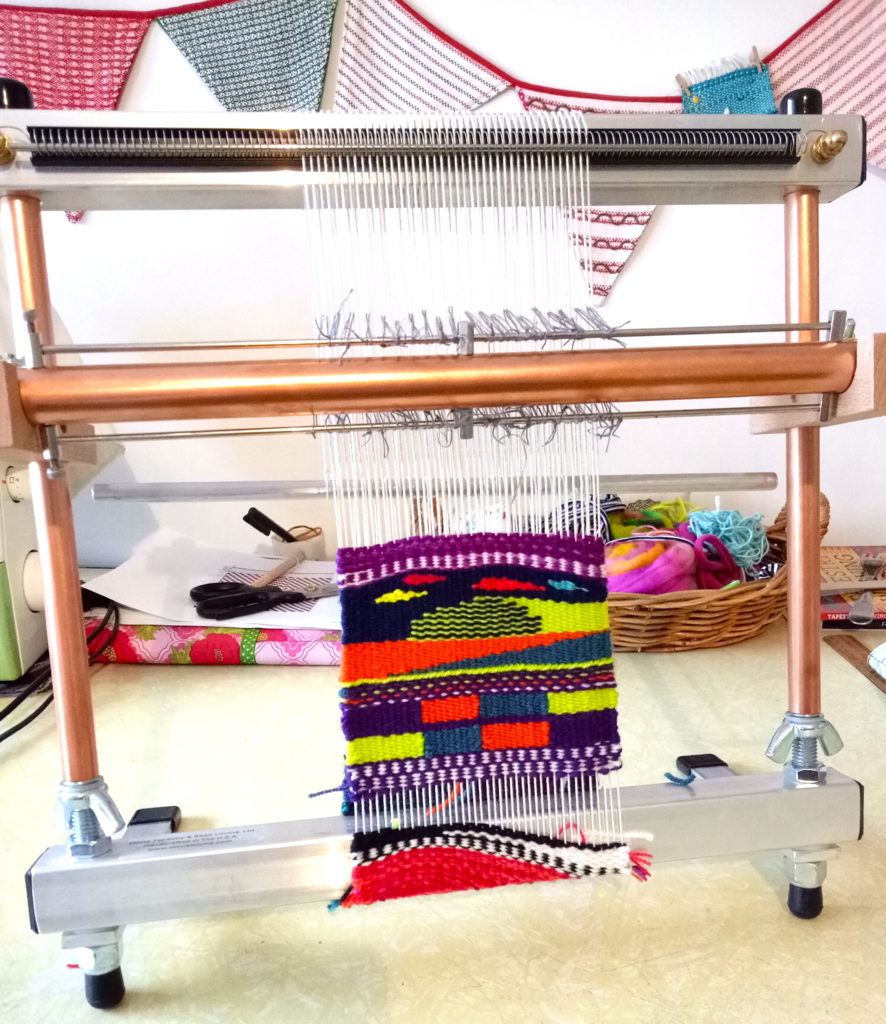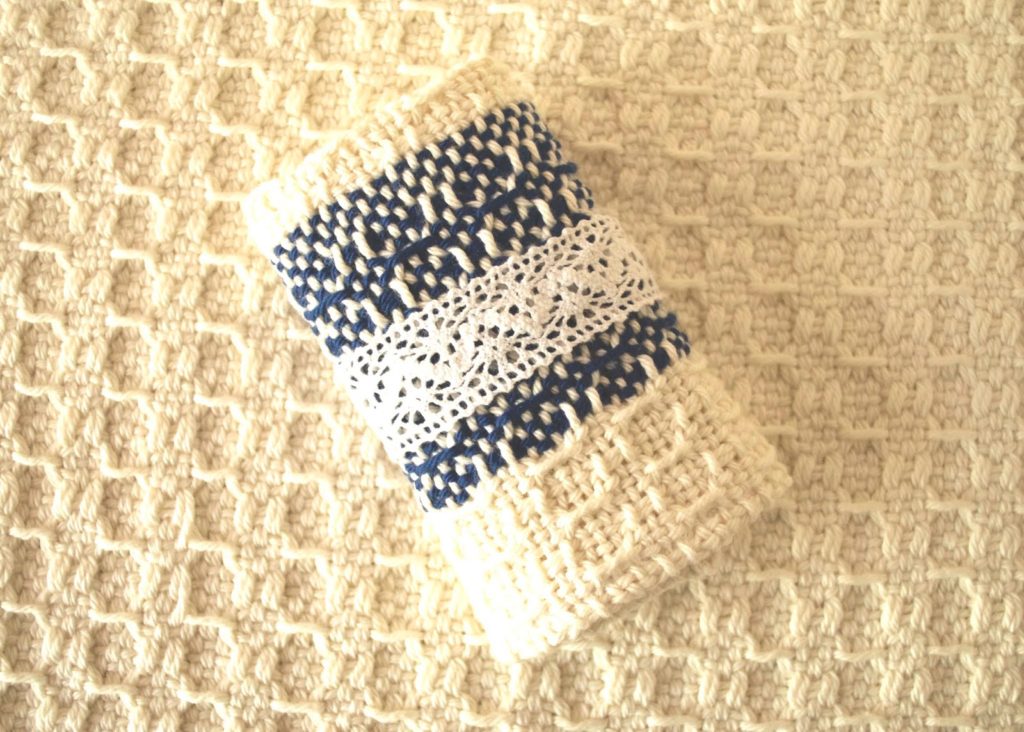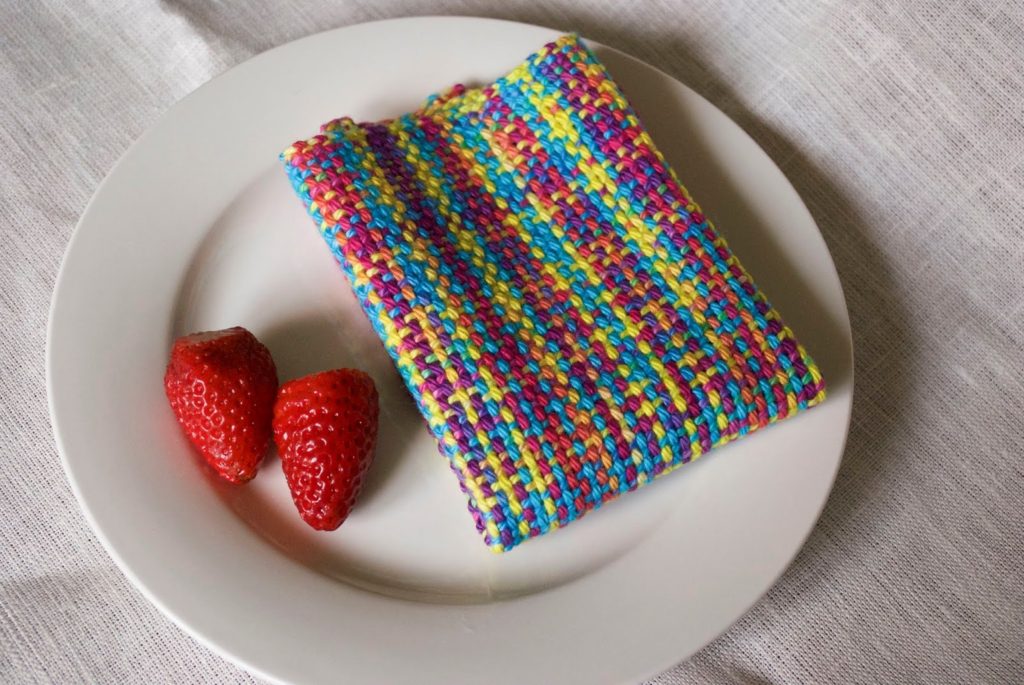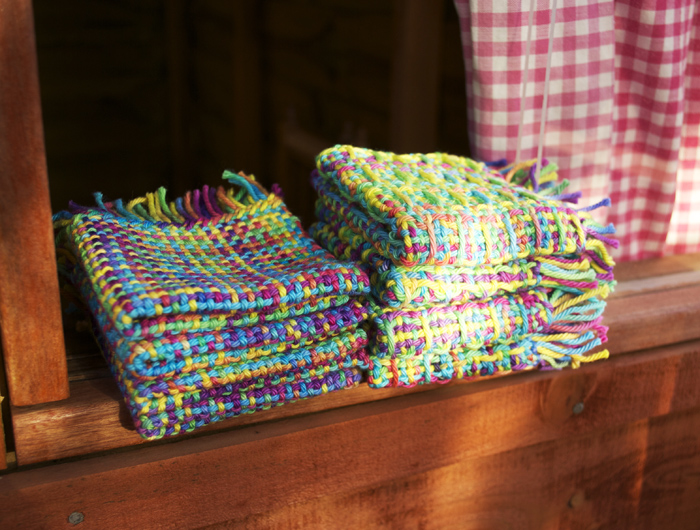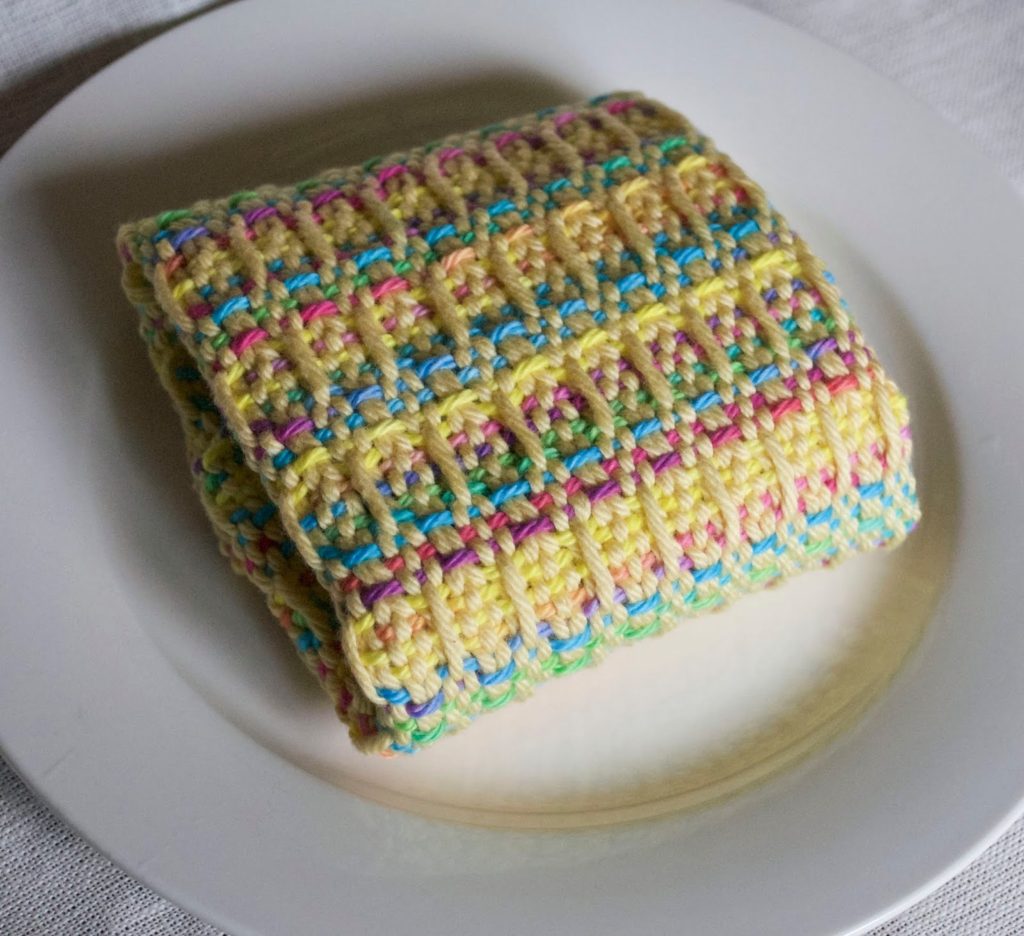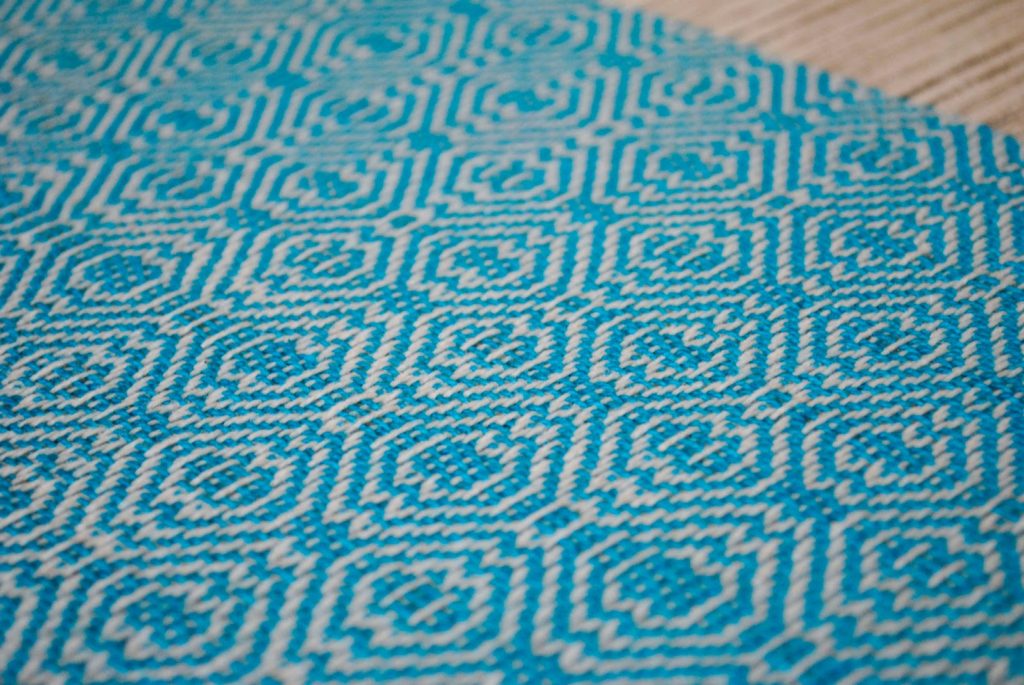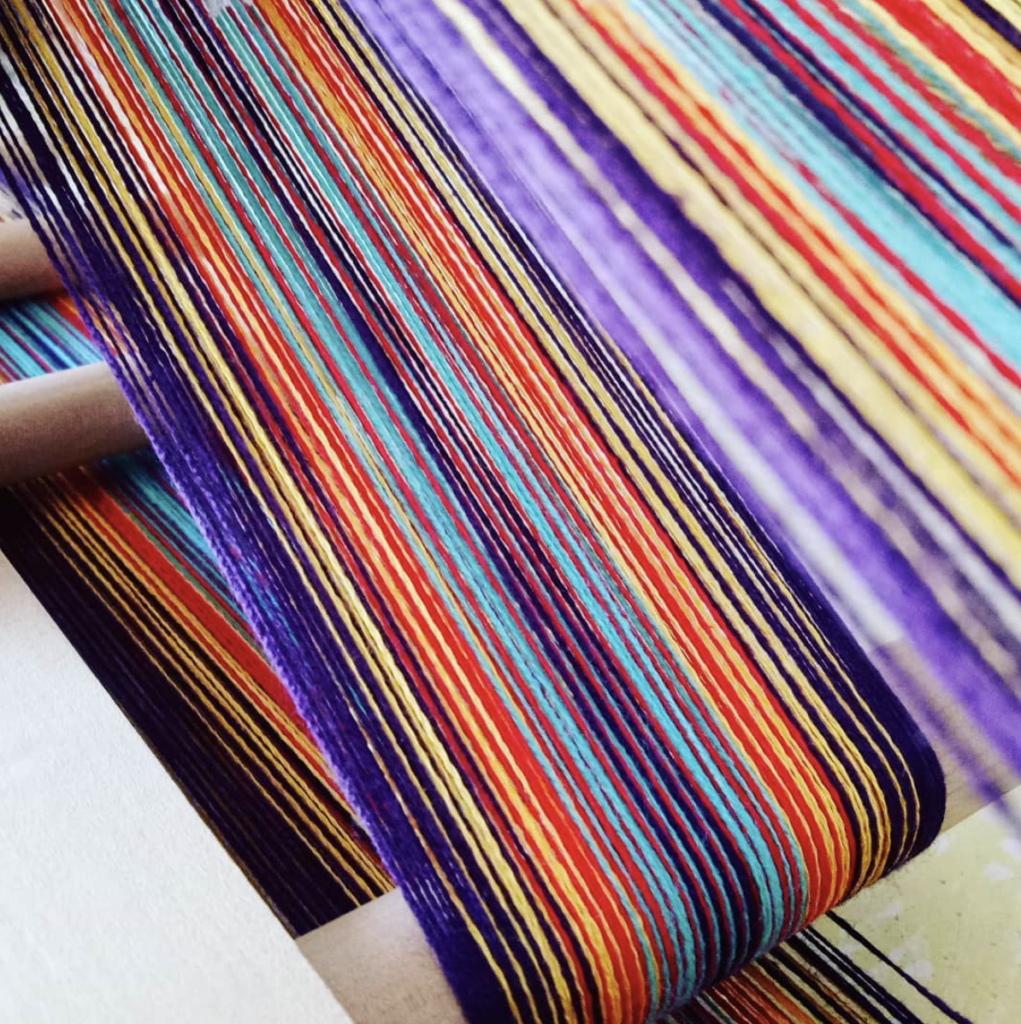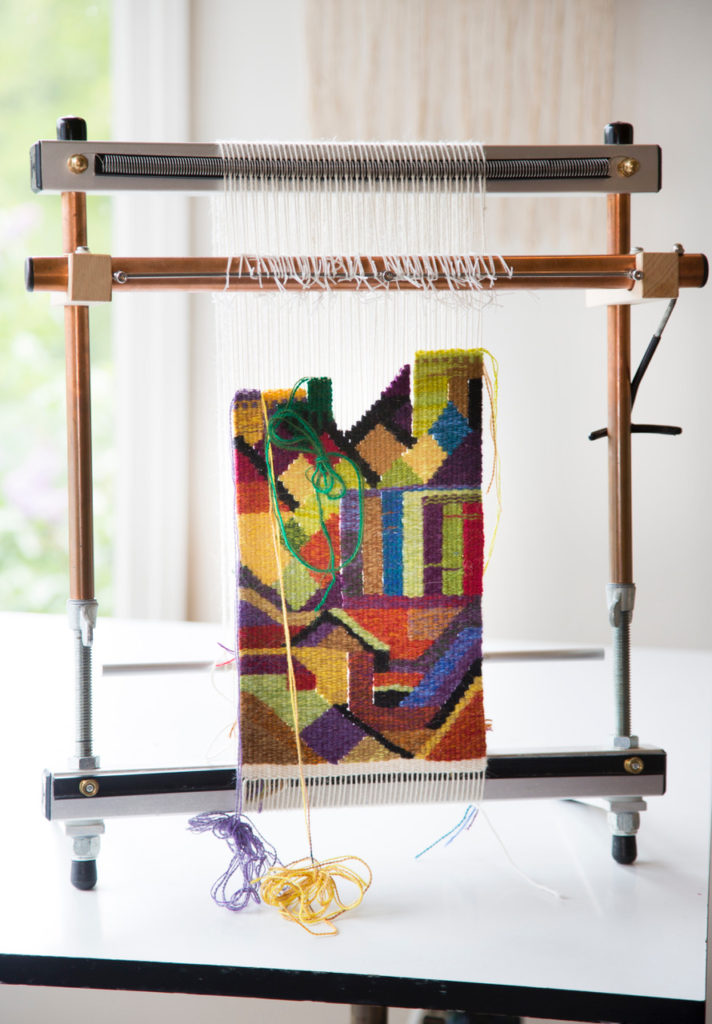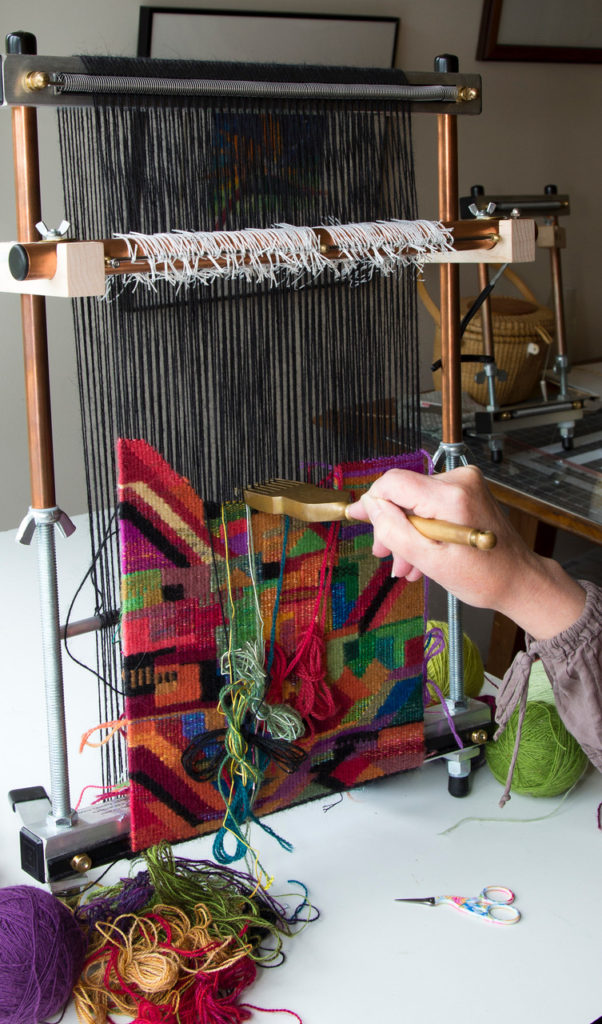Have you ever dreamed of owning a yarn shop? Tracy had that dream and made it happen!
I have known Tracy online for many years. When our children were much younger, we were involved in an online craft community, Crafty Mamas. It was a fantastic little corner of the internet where a group of women shared all manner of crafty projects and ideas. But it was more than that. It was a support and friendship group. Many of the friendships formed have continued to this day.
I would say that you are a classic “hands won’t stop” kind of creator. You are proficient in many types of fibre arts, which was the one that started it all for you?
“Knitting. My mum is a knitter and my Nan was a fabulous knitter. I was very close to my Nan as a little girl and I have very strong memories of her and her knitting. I was knitting at 5 years of age. Mum says I very quickly outstripped her skills and was knitting lace by the time I was seven. I learned to crochet when I was 7. We had immigrated to Australia and like many who came from the UK my parents had a hard time settling in their new country. They had decided to go back to the UK but didn’t want to go without seeing some of Australia first, Which is how I ended up in Gladstone, Queensland living in a caravan park. Another little girl was crocheting clothes for her Barbies and she taught me. My parents eventually came to love Australia and we did end up staying.
What attracted you to weaving? How did you learn?
Like many children I had done weaving with paper and had played with cardboard looms. Weaving as a serious interest came after I had learned to spin, I couldn’t knit fast enough to use all the yarn I was producing so I took up weaving. I went on a road trip to visit Bella Head who had a shop and studio in Adelaide and bought a wheel then loom. Bella gave me a little lesson on the wheel but mostly I learned through Interweave and YouTube videos.
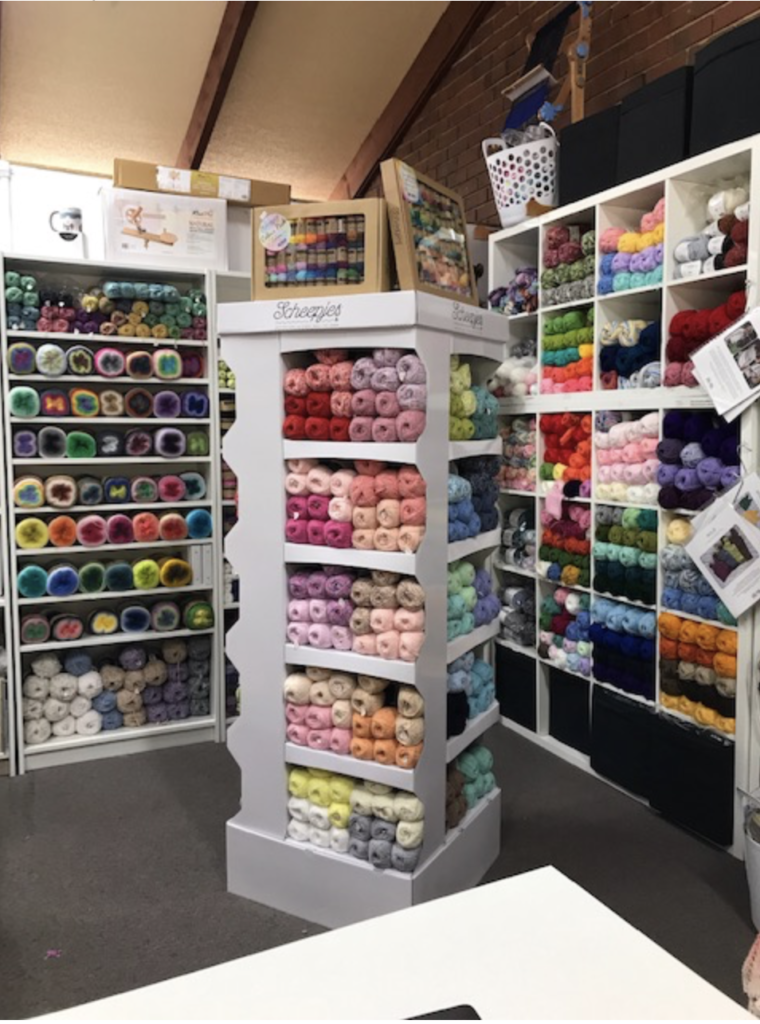
How long has your shop Knit Spin Weave been open? Was it always your dream to have a shop?
Knit Spin Weave is in it’s third year. As a teenager I wanted to make my living from knitting but making money from hand knitting wasn’t a very secure income. I ended up going to College and getting a Bachelor of Education. I spent years teaching in the Northern Territory before coming back to South Australia to live. I was a stay at home mum and I took up knitting again, looking for a way to finish something. Raising a family is never something you can finish. Cleaning a house with seven children is never something you can finish. Knitting you can finish and get that satisfaction of completion.As my youngest was growing up and Centrelink were encouraging me to look at my future employment options. I knew I didn’t want to return to teaching. I didn’t have the passion, time and energy to devote to the children I would teach, so I started to think about my options. I took up a part time job which wasn’t an ideal fit and ended up with an emotional breakdown. My confidence of returning back to the workforce was severely shaken. My self worth plummeted and I had a mental crisis. About the same time, Peter my husband came out of work, Peter got shingles and a family member was diagnosed with breast cancer and we had a fire that destroyed our shed. Life just didn’t seem to be worth it anymore. I was pretty much rock bottom. The good part about being rock bottom is there is only one thing left to do and that is change.
The idea of the shop came from the ashes of my life. I was sitting in the studio and Peter came in and told me the insurance were paying us out in cash. He said, you can have half, what do you want to do with it? From nowhere the idea came, I’m going to open a shop. Even though the tough times I have never regretted that decision.
I know I am in the right place for me. I knew it as soon as I had taught my first customer/ friend to crochet and she told me about how tough life was for her at present. As she left I knew I had done something good that would make a difference in another persons life. Being creative is so important to us as human beings. I really think we need to do it for our mental well-being.
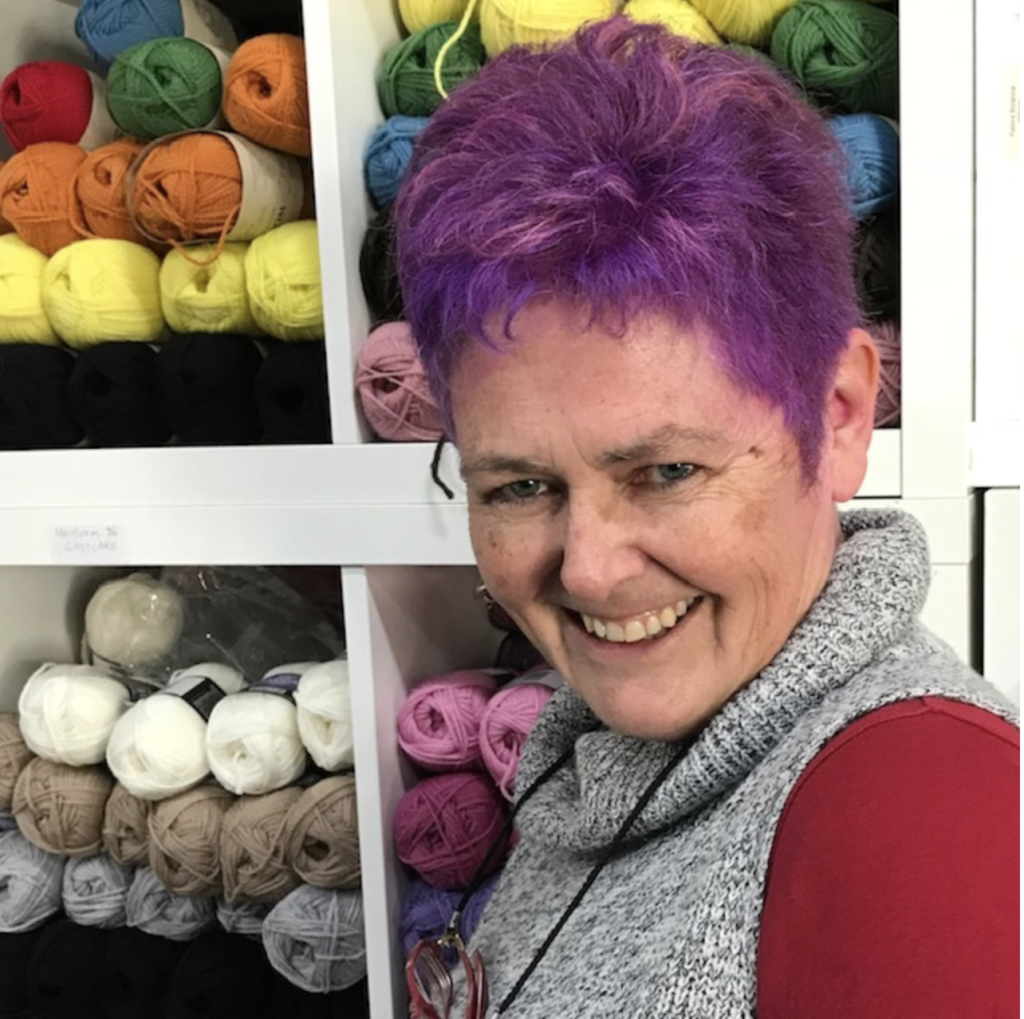
You have what many people today would consider a large family. Do you find it hard to balance business and family? Do you have any coping mechanisms to share?
Yes, it is hard to balance. I often feel selfish in having followed my dream. I especially feel guilty about my two youngest as I haven’t spent the time with them that I did with my older children. Peter is now the stay at home parent. He does the main part of the parenting. He’s the one the kids turn to for a hug and tell their troubles too. At times I feel resentful but I try to remember I had the privilege of that with the older children and it’s now Peters turn.The biggest thing I have learned is to let others help. My older children all care for the younger ones. My 16 year old son takes days off school to care for his 11 year old autistic brother. The older children all pitch in. I’m very proud of all of them. I feel incredibly blessed by the wonderful people my children are.
What are your favourite fibres to use and why?
Wool is my favourite. I love the feel of it even the strong wools. I love spinning it from raw fibre or from prepared fibre. It’s so forgiving to weave and knit with.
What single item do you seem to make the most of?
Shawls. I love knitting lace shawls. I don’t wear them. I have a rather large stash of them which made me ban myself from knitting any more. Knitting lace is mindfulness for me. When I knit lace I have to focus, I can’t let the monkey mind play or at the end of the row I am punished by the pattern being out.
There are a variety of classes running at Knit Spin Weave. Do you run the classes yourself? Do you find that your students inspire you?
I run the classes myself. I don’t have enough income to pay anyone else, plus I love teaching. I love guiding others to learn and being part of their journey. It’s a huge privilege to be someones first knitting teacher. We can all remember the person who taught us to knit.
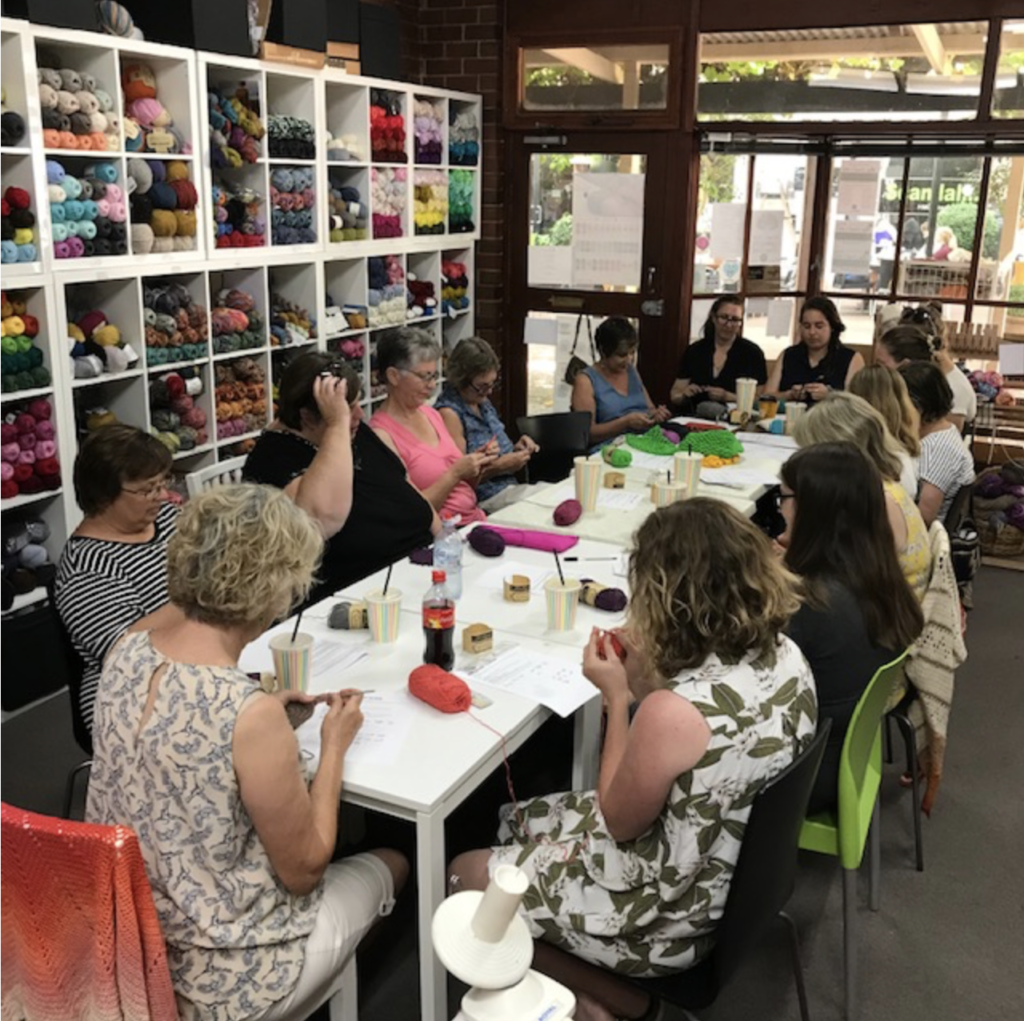
What are your hopes and plans for the future of your business?
My goal right now is just to pay myself. After that I do dream of opening a second shop in Adelaide as the kids get a bit older and start moving to the city for higher education. The online shop is something I got dragged to kicking and screaming but it does pay the bills. I try to limit my time online as it cuts into my creative time.
Being based in South Australia, what is one of your favourite places to visit?
Bundaleer Forest. I love the peace of it. When I need to get away from it all I head out there and walk under the Maples. I take my small frame looms out there and sit and weave. Weaving on small looms is like adult colouring books for me. No one really gets to see them, they don’t really have a purpose or use. They are just pure mindfulness, meditation and connection to a higher being for me.”
Thank you for sharing with us Tracy, I’m sure this interview will be an inspiration to many!
You can find the Knit Spin Weave shop at:
Shop 5/266 Main North Road, Clare 5453
There is also an online shop here
And a Facebook page here.
So, how about you? Have you ever dreamed of owning a yarn shop? Or perhaps another creative business? Let me know about it by leaving a comment, I would love to hear what your dream is!

